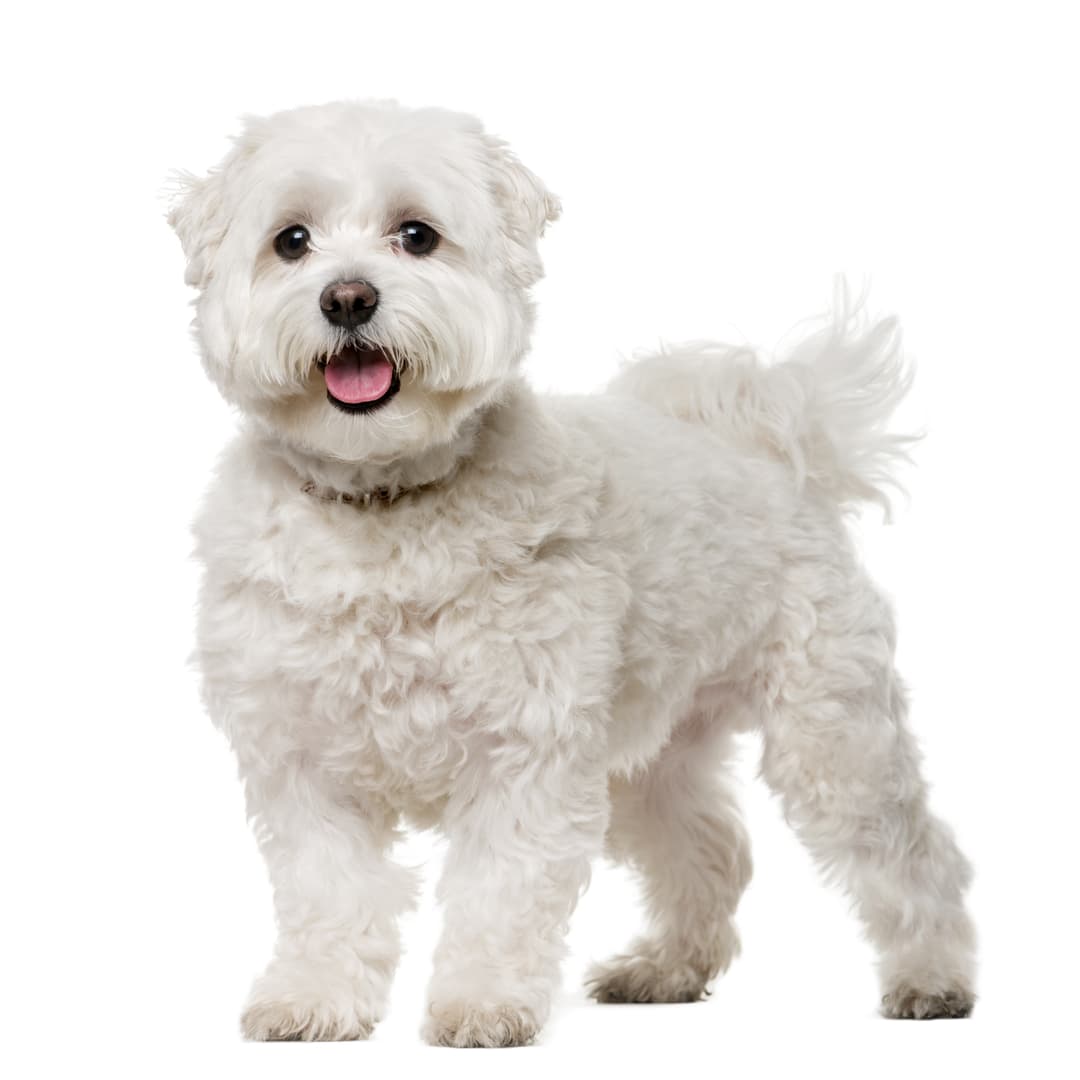Basepaws analyzes this breed as part of a group of other breeds.


Basepaws analyzes this breed as part of a group of other breeds.


Basepaws analyzes this breed as part of a group that also includes Bichon Frisé, Bolognese, Coton de Tulear, Maltese.
Despite being distinct in characteristics and origin, some pairs or groups of breeds lack the number of genetic differences required to distinguish these populations from one another, particularly when only a subset of these differences are inherited by a mixed breed dog. As we continue to expand our breed database, we aim to increase the resolution of our ancestry algorithm such that differentiating between increasingly specific ancestral sources becomes possible.

The Maltese breed is one of the oldest toy dog breeds, with a history that stretches back nearly 3,000 years. Originating from the Mediterranean island nation of Malta, these dogs were adored by aristocracy throughout ancient Greece, Rome, and Egypt. Phoenician Sailors visiting the island of Malta around 1500 B.C. for trade are credited with first discovering the breed. Maltese have been associated with nobility, luxury, and refinement, often depicted in paintings and writings of the period. Their exact ancestry is unknown, but they are considered a progenitor to many of the small white European toy breeds seen today. The breed was brought to England in the early 1300s when ladies of the upper-class also took a liking to this small breed. The first Maltese was not seen in the United States until 1877 at the Westminster Kennel Club dog show.
The Maltese can suffer from deafness, dental conditions, shaker syndrome, portacaval shunt, patellar luxation, open fontanelles, entropion, hypothyroidism, hydrocephalus, distichiasis, hypoglycemia, patent ductus arteriosus, chondrodystrophy and intervertebral disc disease (CDDY and IVDD risk) with or without chondrodysplasia (CDPA), and glycogen storage disease type Ia (GSDIa). As for all breeds, genetic screening for hereditary conditions is recommended to assist veterinarians with diagnosis and proactive care, as well as help breeders identify affected and carrier dogs.
The Maltese loves to be spoiled and is the perfect lap dog. Although they are small, the Maltese can also be feisty and rambunctious. They are companion dogs but can be over-coddled. Although small in stature, they can make great watchdogs, as they bark at other dogs and strangers. If the Maltese becomes the pack leader it may lead to unnecessary barking and snapping at strangers, other dogs, or even children. Thus, there must be a firm chain of command to keep this breed from acting out. The breed is not recommended for families with younger children.
A canine genetic lineage is a group of individuals or entire breeds that descended from common ancestors predating modern breed formation. Often these lineages are associated with a ‘type’ of dog with a unique historical working role and associated behaviors (e.g., herding, scent hunting, etc.).
Breeds within the toy dog lineage were developed to be companion animals. They originated as lap dogs for royalty, nobility, and affluent individuals, and typically weigh less than 15 pounds. Breeds within the toy dog lineage were bred to be friendly and sociable, playful, and energetic while also having a heightened awareness of their environment.
Example breeds with ancestry from this lineage include Chihuahua, Maltese, and Shih Tzu.
The Maltese breed is known for its long, silky, pure white coat. Unlike most breeds, the Maltese has hair, not fur, which continuously grows much like human hair and typically does not shed.
The Maltese breed has been recognized by the AKC for over a century, with official recognition dating back to 1888.
The Maltese's coat can grow to the floor length, resembling a tiny walking mop when not styled.
Ancient Greeks built tombs for their Maltese dogs, and Aristotle referred to the breed as "perfectly proportioned" despite its diminutive size. Roman Aristocrats were said to not be fully dressed without their "Roman Ladies' Dog" peeking out.
https://www.akc.org/dog-breeds/maltese/
https://www.ukcdogs.com/maltese
https://www.petmd.com/dog/breeds/c_dg_maltese
https://fci.be/en/nomenclature/MALTESE-65.html
https://www.pawprintgenetics.com/products/breeds/160/
Recommended by top vets with decades of experience
21 breeds
64 genetic health markers
50 genetic trait markers
